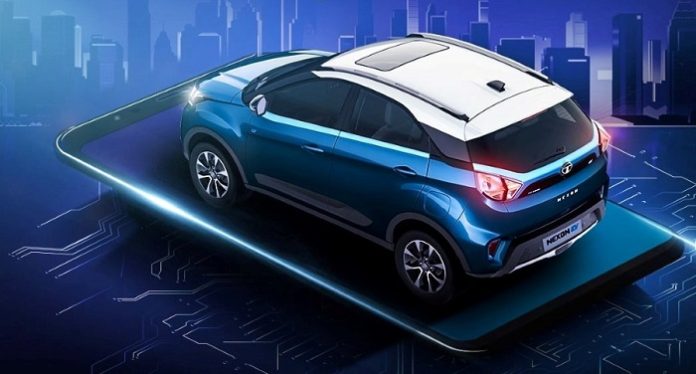Tata Motors expects its electric vehicle sales to more than double in the current financial year, backed by strong demand for cleaner vehicles amid rising fuel prices. Also, given a sustained increase in orders, the company predicts India’s overall passenger vehicle market to scale to a new peak.
The manufacturer of the Tigor and Nexon EVs is working to debottleneck production amid a continuing shortage of semiconductors and hopes EVs to account for 10-15% of its total passenger vehicle sales in the new fiscal year. Based on its current production schedule, that would be about 50,000-75,000 EVs, an at least a two-and-a-half-fold increase from last fiscal year.
Speaking on the sidelines of an event where the company unveiled the Tata Curvv Coupe concept vehicle on Wednesday, Shailesh Chandra, MD of Tata Motors Electric Mobility, said the demand for its EV models far exceeded supply.
“Our trend trajectory indicates, the number could more than double. The semiconductor supply is the only thing which could pull it back,” he said. “Having said that, things however have improved, but one needs to see what is the implication of Russia-Ukraine, the new (Covid) wave in China, all that remains to be seen.”
Chandra expects the share of EVs to be in double digits in its fiscal 2023 output. By FY26, it expects the share to increase to 20-25% of the total production.
Tata Motors sold 19,106 units of EVs in the just-ended FY22, averaging nearly 1,600 units a month. But in March, the last month of the fiscal year, it sold 3,357 units, which increased the share of EVs in total passenger vehicle sales in the month to 8%.
The ratio of the EV passenger vehicle sales to its total passenger vehicle sales rose to 5.15% in the fiscal year ended March 2022, compared with 1.89% in the previous fiscal year, thanks to greater acceptance of EVs by consumers, aided by fiscal incentives provided by a couple of state governments to buy electric vehicles.
The company is looking to increase its EV capacity and secure more chipsets to cater to the strong demand.
Tata Motors has committed to investing $2 billion in the EV business and is on course to have a portfolio of 10 products by FY26.
“Both from a demand and supply point of view, EV business performance has exceeded our expectations. We were able to secure 30% higher supply than planned, the demand was also double of what we could deliver,” Chandra said. “Demand skyrocketed, the word of mouth was very positive, our customers have become our brand ambassadors. Twenty thousand EVs on the road are running advertisements for us.”
As for the mainstream passenger vehicle market, Chandra expects sales to grow in a strong double-digit and scale a new peak this financial year.
“If the supplies improve, the industry could hit a new peak and there is no major black swan event. From the demand perspective, it is still growing. We will look at all options to expand capacity,” Chandra, while also not ruling out acquisition opportunities to grow.
India’s passenger vehicle industry was operating at 85% of demand in FY22 due to supply-side constraints, and orders for at least 400,000 vehicles were carried forward to the new fiscal year that started on April 1.
The tentative production schedule of Tata Motors suggests that the company is planning to produce nearly half a million units of passenger vehicles in FY23. This means if the company is planning to achieve 10-15% of the total PV sales from EVs, it needs to produce 50,000-75,000 PVs.









